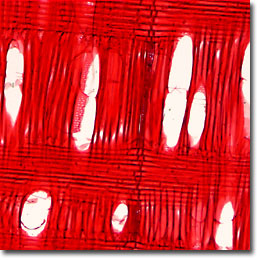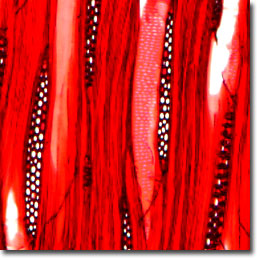The Yellow Poplar
The Yellow Poplar (Liriodendron tulipifera; also known as the Tulip Poplar, Whitewood or simply the Tulip tree) is a hardwood tree found primarily in the eastern United States, ranging from Massachusetts west to Illinois, and from Arkansas and Louisiana south to the Gulf Coast and central Florida. The sapwood is often variegated or striped and white in color, while the heartwood is variable in hue, ranging from clear yellow to tan or greenish brown.

Cross Section

Radial Section

Tangential Section
The tulip tree is well named, having flowers that rival earth-bound tulips. The blossoms, ranging from a greenish yellow to a deep orange, appear on the tree in May and June. Southern housewives traditionally pick up dropped blossoms and float them in shallow dish of water to provide an interesting table piece. This ornamental and timber tree can grow to an average height of 150 feet. Propagation is by seed, and the poplar trees prefer cool, deep soil and quite a bit of sunlight and humidity.
Tulip poplar wood is widely employed as a veneer for berry and fruit boxes. The lumber is used for furniture, cabinetwork, boxes, crates, pallets, millwork, musical instruments, fixtures, coffins and caskets, and many other miscellaneous uses such as kitchen utensils, toys, novelties, patterns, and cigar boxes.
Microscopic examination of iron-alum hematoxylin and safranin stained thin sections (see the digital images presented above) reveals a diffuse and porous wood having scalariform perforation plates. Vessels are numerous, and inter-vessel pits ranging from 5 to 15 micrometers in diameter and oval or angular in shape. Fiber tracheids are thin to moderately thick-walled and medium to coarse in texture. The rays are unstoried, homocellular to heterocellular, and mostly 2 to 3 seriate. Growth rings are delineated by terminal parenchyma.